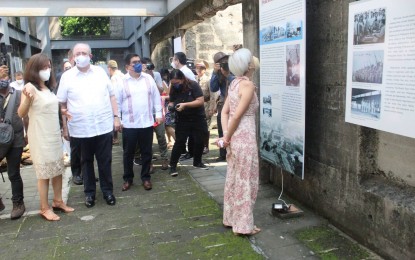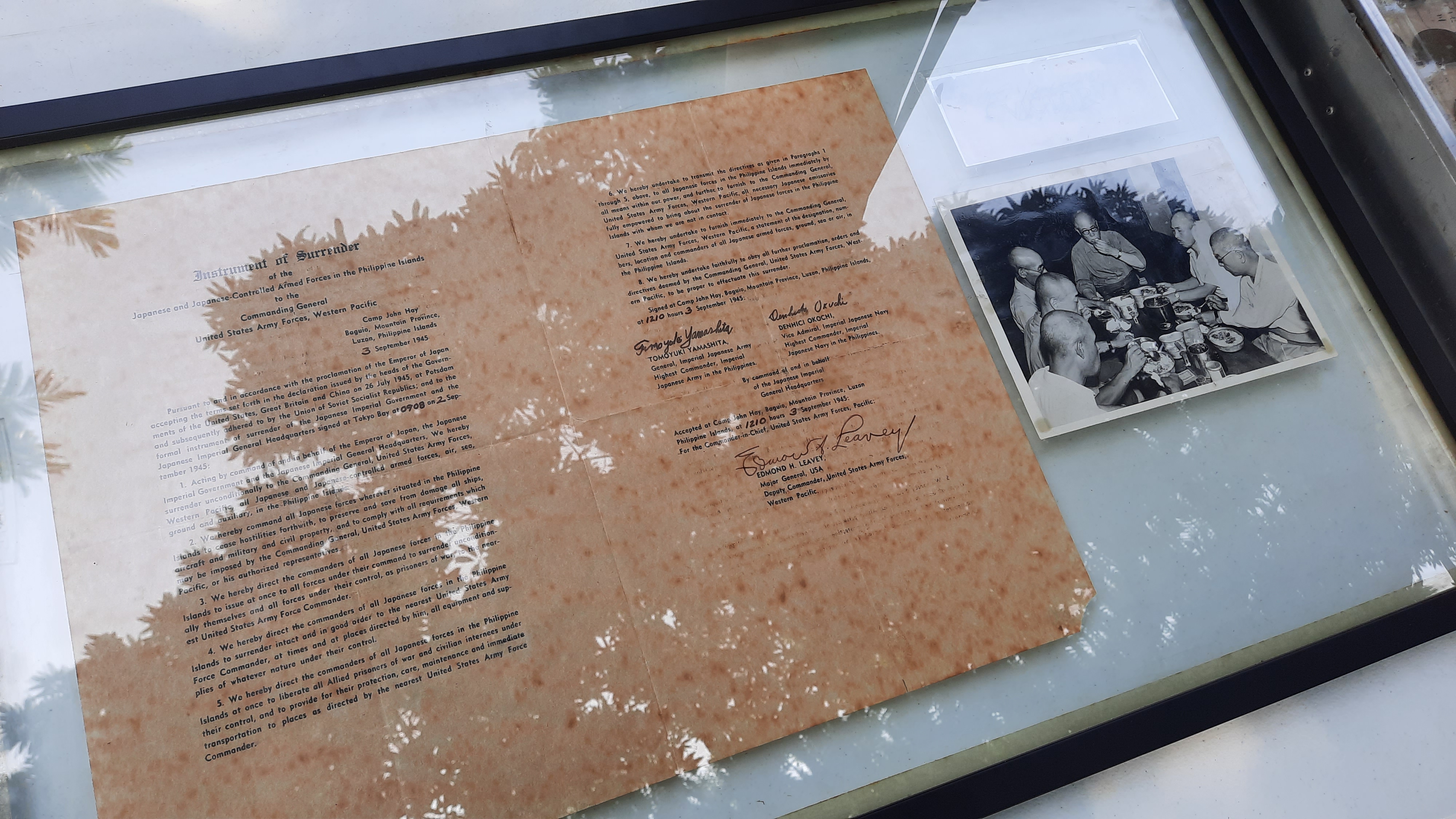
WAR EXHIBIT. Australian Ambassador Steven Robinson and Mexican Ambassador Gerardo Arredondo (2nd and 3rd from left) and Manila Mayor Honey Lacuna (viewing the photos) grace the launch of the “Remembering World War II” exhibit at Fort Santiago in Intramuros on Saturday (July 16, 2022). The exhibit features easy-to-digest texts and photos during the pre-war years, Japanese invasion and occupation, rise of various resistance groups, and the Philippine liberation. (PNA photo by Robert Alfiler)
MANILA – An exhibit retelling the resistance and sacrifices made by Filipinos that led to the country's liberation from its oppressors during World War II opened to the public at Fort Santiago in Intramuros, Manila on Saturday.
“Remembering World War II”, a narrative and pictorial exhibit led by the Philippine World War II Memorial Foundation (Philwar) and curated by its vice president for research, Desiree Ann Benipayo, will be on display until December 31.
It features five sections and easy-to-digest texts that cover the pre-war years, Japanese invasion and occupation, rise of various resistance groups, and finally, the country's liberation.
"Often called the war that changed the world, World War II was one of the most pivotal periods in our nation's history. It was a war that tested our mettle, our national values, and our endurance and resilience," Benipayo said in her speech.
"For three and a half years during the war, the Filipino people lived in darkness and uncertainty. The death toll was staggering -- 1.12 million died out of the 17 million population, meaning one in every 17 Filipinos died during the war," she added.
Benipayo stressed that not one family was spared the death of a loved one or some form of hardship during that dark period of tragedy and fear, but she said, "it was also a period of triumph and glory, as numerous Filipinos fought to resist the enemy."
Amid the "fading" collective war memory of the nation, the curator hoped this project would help inspire future generations to continue remembering and honoring the fallen.
More importantly, she hopes the exhibit would impart "that there are no real victors in war and everyone must continually aspire peace across the globe."

The launch was graced by Intramuros Administration chief Edgardo Baysic, John Groch of the United States Embassy in Manila, Mexican Ambassador Gerardo Arredondo, Australian Ambassador Steven Robinson, Memorare Manila 1945 Foundation president Jose Cabarrus and Manila Mayor Honey Lacuna.
Lacuna thanked Philwar for providing the current generation with a reminder of what happened during the tragic events.
"This narrative and pictorial exhibit of the second world war in our country is a manifestation of our commitment to be partners in initiating, developing, and carrying-out projects and activities that will educate and enlighten the Filipino people, especially the youth by immortalizing significant events of our past," she said in her speech. "The events of the past [Battle of Manila] may be a bitter pill for us to swallow, but the lessons it brought to us made us better citizens of today."
Arredondo acknowledged the importance of the exhibit in preserving the memories of the Philippine resistance while Robinson reminded the public to remember the courage and sacrifices of Filipinos, Australians, and other allied partners during the war. (PNA)
